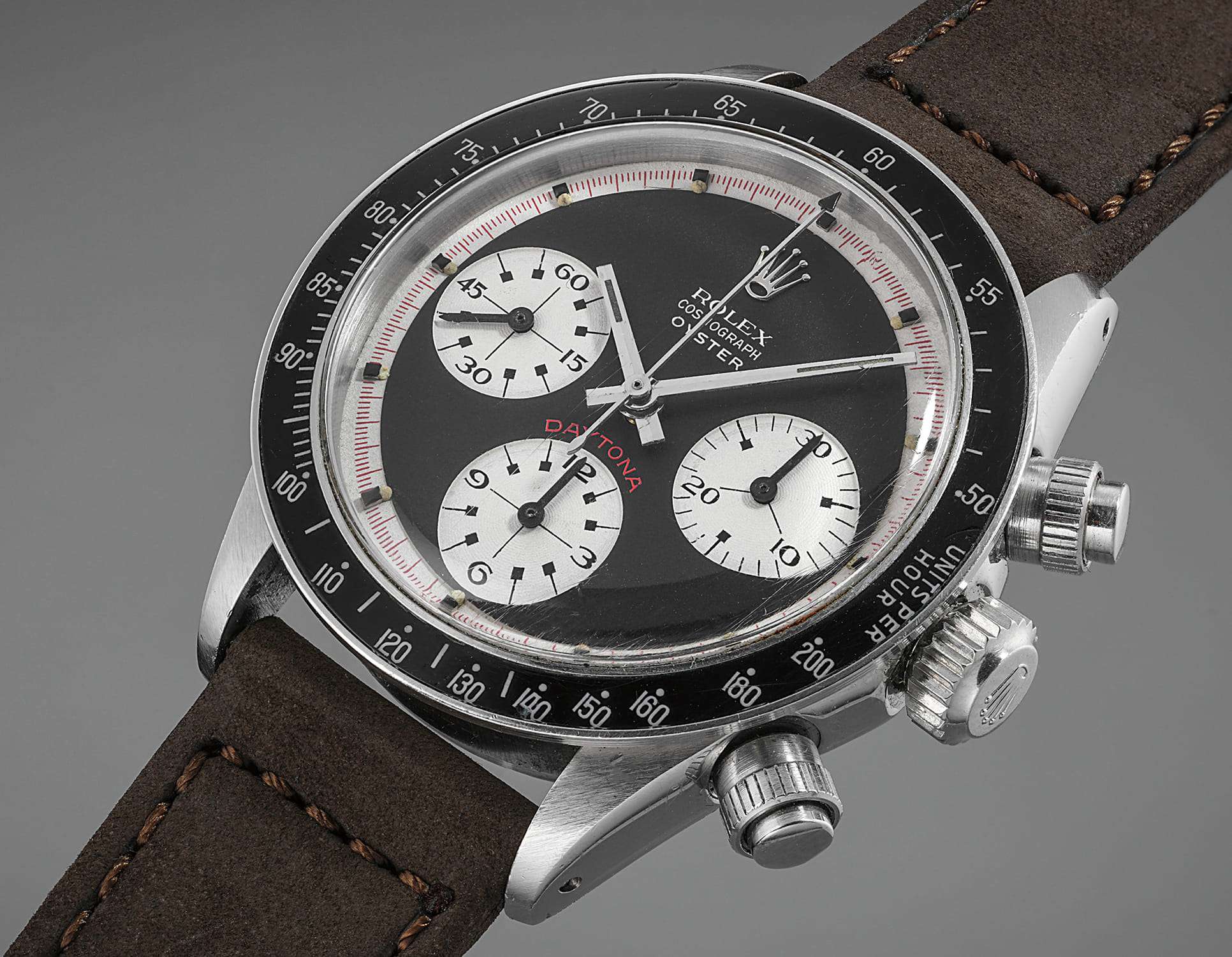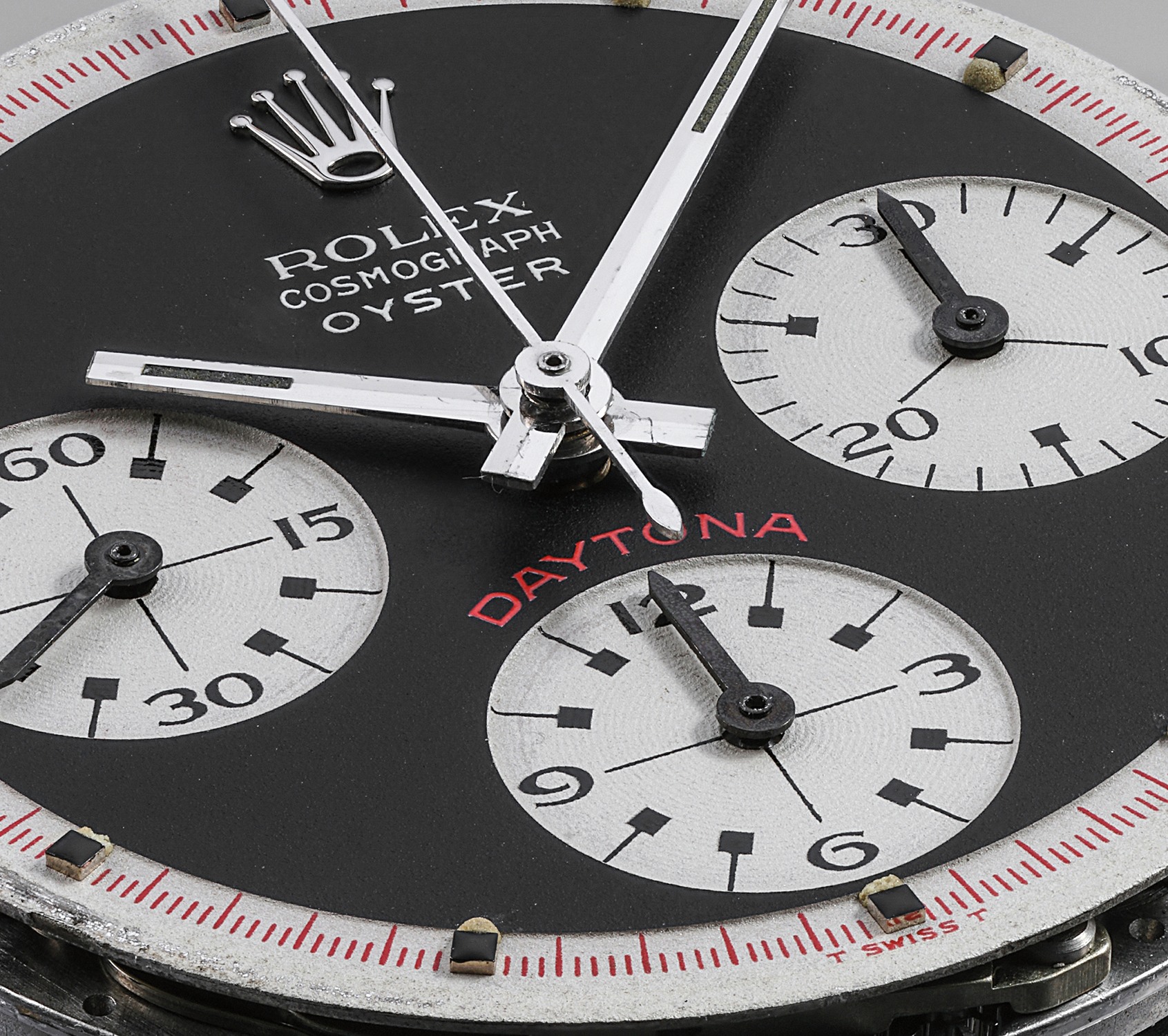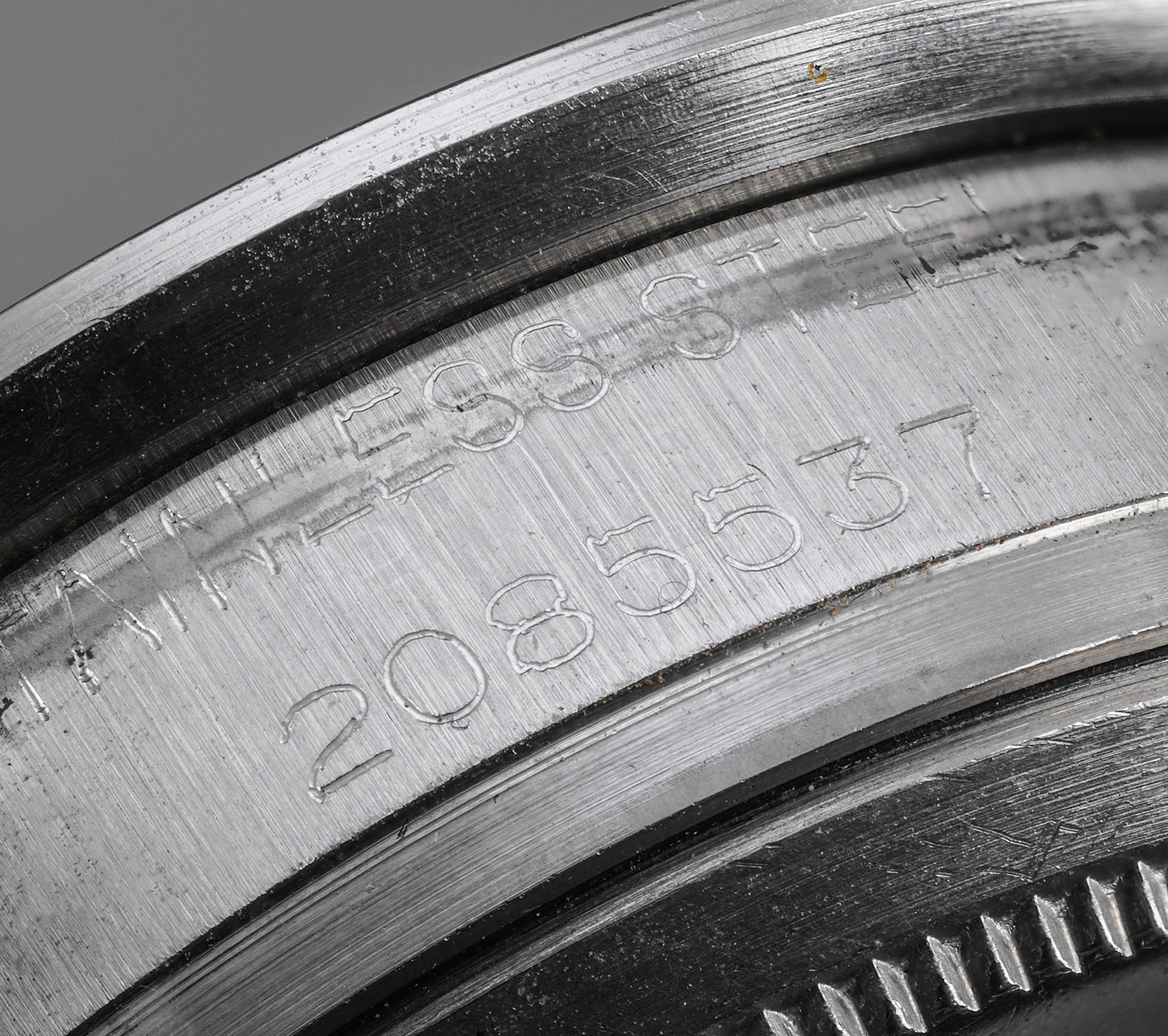







153
Rolex
Ref. 6263, case back stamped 6239 to the inside
Cosmograph Daytona Paul Newman "Oyster Sotto" a.k.a. "RCO"
A very fine, extremely rare and highly important stainless steel chronograph wristwatch with "Oyster Sotto" Paul Newman dial
- Estimate
- CHF400,000 - 800,000€356,000 - 713,000$403,000 - 806,000
CHF704,000
Lot Details
- Manufacturer
- Rolex
- Year
- Circa 1969
- Reference No
- 6263, case back stamped 6239 to the inside
- Case No
- 2'085'537
- Model Name
- Cosmograph Daytona Paul Newman "Oyster Sotto" a.k.a. "RCO"
- Material
- Stainless steel
- Calibre
- Manual, cal. 727, 17 jewels
- Bracelet/Strap
- Leather
- Clasp/Buckle
- Stainless steel Rolex pin buckle
- Dimensions
- 37.5mm Diameter
- Signed
- Case, dial, movement and buckle signed
Specialist
Full-Cataloguing
Catalogue Essay
Few Rolex timepieces command as much admiration as the Paul Newman “Oyster Sotto”. Considered the apex of Daytona collecting, this extremely rare variation - less than two dozen are known overall - was made during the last leg of production of the Paul Newman dial. While the “Exotic” (as Rolex called the Paul Newman dial at the time) dials were being phased out due to their little popularity, the Sotto variation came about most probably due to Rolex manufacturing processes at the time. It is speculated that a couple of batches of Paul Newman dials made for non-Oyster (without screw-down pushers) models were repurposed to be fitted on Oyster cases. Thus, the word Oyster was added under - “sotto” in Italian - the “Rolex Cosmograph” designation and these dials read “Rolex Cosmograph Oyster” (RCO, per their American nickname) rather than the usual “Rolex Oyster Cosmograph”. Oyster Sotto timepieces are indisputably regarded as “Holy Grails” of Daytona collecting, matched in appeal and collectability only by few bespoken Daytona variations.
Even within this extremely rare dial family, an evolution of the graphics can be found. The most appealing examples are those belonging to the first series (or “Mark I” dials - as the one offered here), which features an “old school” Rolex signature, with less prominent serifs than the signature found on Mark II dials. Mark I dials are known to be fitted on 2’085’xxx pieces, while Mark II examples are found on cases close to 2’2 Million.
Given the rarity of the variation, the collector community at large rejoices when a new specimen is discovered. The present example, however, is not only a newly discovered Oyster Sotto, but it is furthermore preserved in absolutely original condition, down to the very last detail: crown, millerighe pushers, caseback stamped 6239, bezel. Everything is as the scholar would expect and the originality is boosted by the outstanding condition. The case boasts crisp edges and only minor signs of wear; it has most probably never been polished and only sparsely used in its early years. The 2’085’537 serial number (perfectly falling in the 2’085’xxx range expected from a Mark I Sotto dial) is as crisp as ever. Since its purchase in the late 1980s by the current owner, the piece has peacefully slept in the darkness of a safety deposit box, used maybe once or twice in total. The dial condition is simply breathtaking: without any kind of marks or scratches, absolutely flawless graphics, and all luminous accents present and aged to a light ivory hue.
It is not an overstatement to say that the present specimen not only is a new discovery, but it is also one of the most exemplary preserved Oyster Sotto to ever appear on the market. A true “Crown Jewel” for all collectors of highly important timepieces.
Even within this extremely rare dial family, an evolution of the graphics can be found. The most appealing examples are those belonging to the first series (or “Mark I” dials - as the one offered here), which features an “old school” Rolex signature, with less prominent serifs than the signature found on Mark II dials. Mark I dials are known to be fitted on 2’085’xxx pieces, while Mark II examples are found on cases close to 2’2 Million.
Given the rarity of the variation, the collector community at large rejoices when a new specimen is discovered. The present example, however, is not only a newly discovered Oyster Sotto, but it is furthermore preserved in absolutely original condition, down to the very last detail: crown, millerighe pushers, caseback stamped 6239, bezel. Everything is as the scholar would expect and the originality is boosted by the outstanding condition. The case boasts crisp edges and only minor signs of wear; it has most probably never been polished and only sparsely used in its early years. The 2’085’537 serial number (perfectly falling in the 2’085’xxx range expected from a Mark I Sotto dial) is as crisp as ever. Since its purchase in the late 1980s by the current owner, the piece has peacefully slept in the darkness of a safety deposit box, used maybe once or twice in total. The dial condition is simply breathtaking: without any kind of marks or scratches, absolutely flawless graphics, and all luminous accents present and aged to a light ivory hue.
It is not an overstatement to say that the present specimen not only is a new discovery, but it is also one of the most exemplary preserved Oyster Sotto to ever appear on the market. A true “Crown Jewel” for all collectors of highly important timepieces.
Rolex
Swiss | 1905Founded in 1905 England by Hans Wilsdorf and Alfred Davis as Wilsdorf & Davis, it soon became known as the Rolex Watch Company in 1915, moving its headquarters to Geneva in 1919. Like no other company, the success of the wristwatch can be attributed to many of Rolex's innovations that made them one of the most respected and well-known of all luxury brands. These innovations include their famous "Oyster" case — the world's first water resistant and dustproof watch case, invented in 1926 — and their "Perpetual" — the first reliable self-winding movement for wristwatches launched in 1933. They would form the foundation for Rolex's Datejust and Day-Date, respectively introduced in 1945 and 1956, but also importantly for their sports watches, such as the Explorer, Submariner and GMT-Master launched in the mid-1950s.One of its most famous models is the Cosmograph Daytona. Launched in 1963, these chronographs are without any doubt amongst the most iconic and coveted of all collectible wristwatches. Other key collectible models include their most complicated vintage watches, including references 8171 and 6062 with triple calendar and moon phase, "Jean Claude Killy" triple date chronograph models and the Submariner, including early "big-crown" models and military-issued variants.
Browse Maker